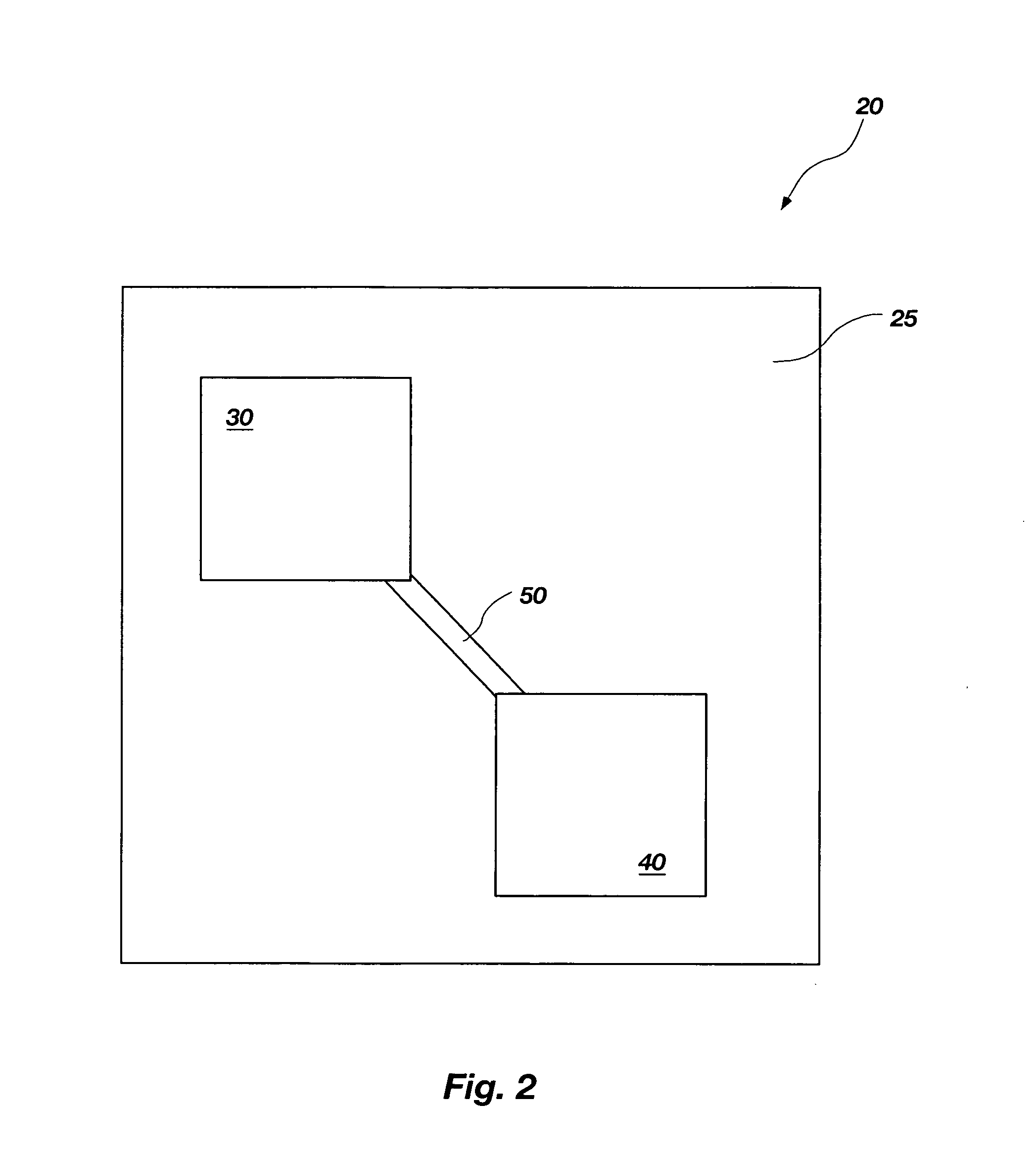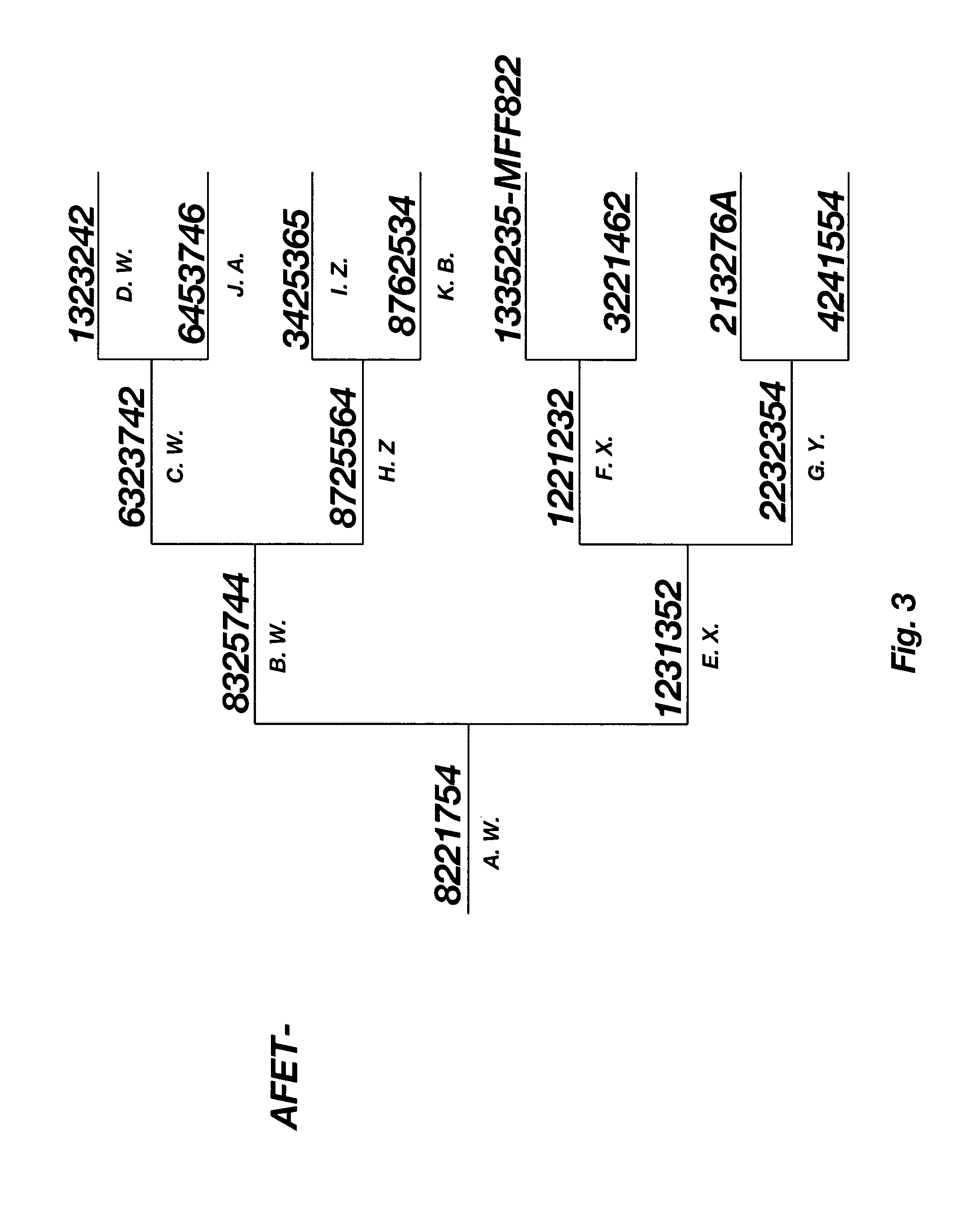Method For Molecular Genealogical Research
a genealogical and molecular technology, applied in the field of genealogical research and record keeping, can solve the problems of uninformative or simply inexistent written documents, the inability of slave descendants to locate any records of their ancestors, and the loss or destruction of the history of some people and communities through time. to achieve the effect of improving the accuracy of genealogical data
- Summary
- Abstract
- Description
- Claims
- Application Information
AI Technical Summary
Benefits of technology
Problems solved by technology
Method used
Image
Examples
Embodiment Construction
[0031]A fundamental principle of genetic transmission, that all persons receive genetic material from their biological parents, allows one to determine the origin of genes based on common ancestry and known modes of inheritance. Because this process is repeated every generation, all individuals carry within their DNA a record of who they are and how they are related to all of the other people on the earth. As individuals trace their biological relationships into the past, lineages will begin to “coalesce” into common ancestors.
[0032]In order to determine the degree of relatedness between individuals, it is necessary to identify those genetic markers that are identical due to shared ancestry. Different regions of DNA have the ability to identify individuals and link them to immediate family groups, extended family or clan affiliations, and larger populations. For example, FIG. 1 illustrates how specific regions of DNA have properties that can identify an individual's identity (DNA se...
PUM
| Property | Measurement | Unit |
|---|---|---|
| physical characteristics | aaaaa | aaaaa |
| polymorphic | aaaaa | aaaaa |
| height | aaaaa | aaaaa |
Abstract
Description
Claims
Application Information
 Login to View More
Login to View More - R&D
- Intellectual Property
- Life Sciences
- Materials
- Tech Scout
- Unparalleled Data Quality
- Higher Quality Content
- 60% Fewer Hallucinations
Browse by: Latest US Patents, China's latest patents, Technical Efficacy Thesaurus, Application Domain, Technology Topic, Popular Technical Reports.
© 2025 PatSnap. All rights reserved.Legal|Privacy policy|Modern Slavery Act Transparency Statement|Sitemap|About US| Contact US: help@patsnap.com



